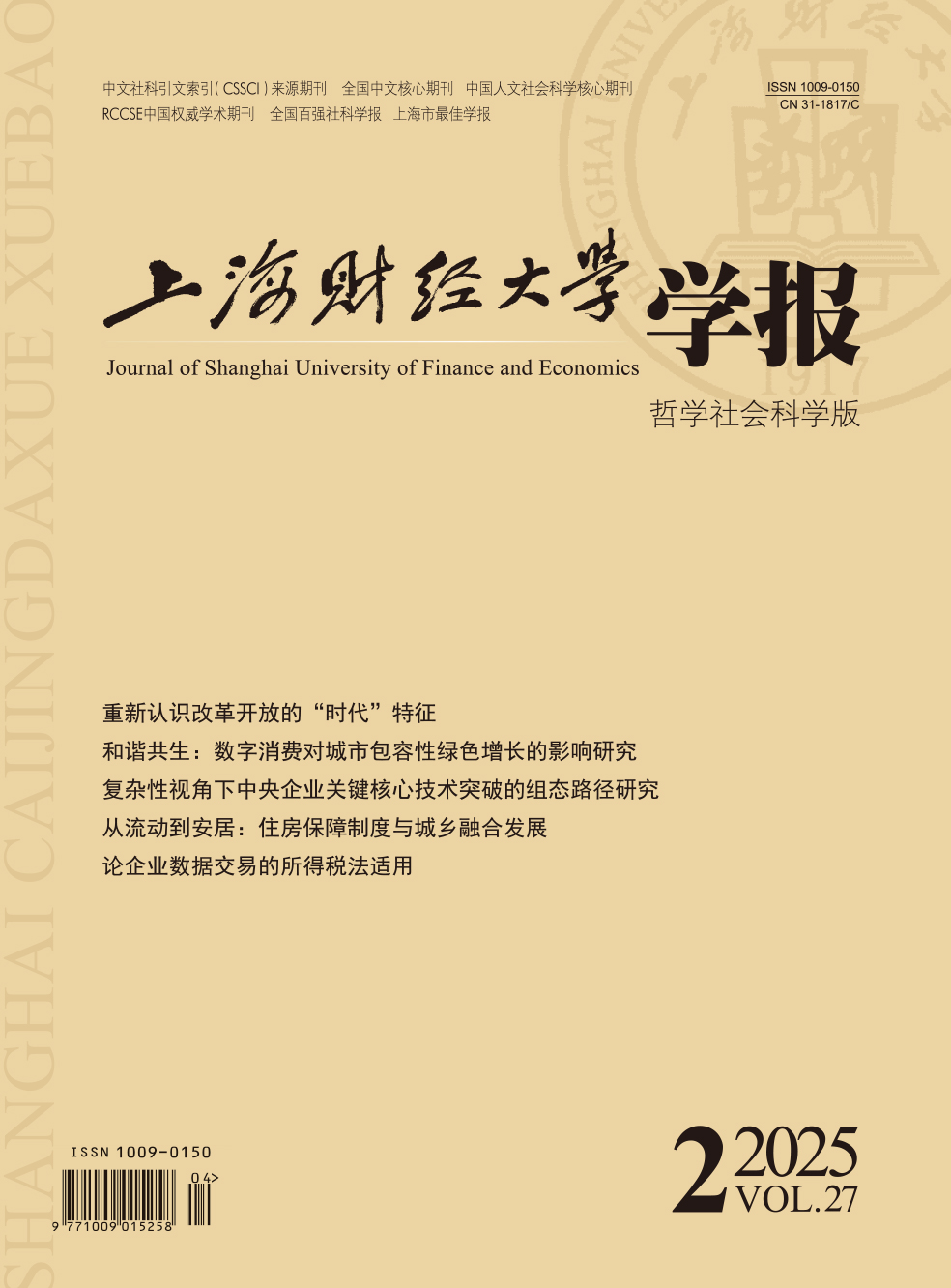经济新常态和资源环境约束下的绿色智力资本是企业软实力竞争的关键,怎样通过积累和应用绿色智力资本来建立企业竞争优势成为企业家亟待解决的问题。文章基于自然资源基础观(NRBV)理论和知识管理理论,探索了绿色智力资本对企业竞争优势的影响机理。通过对254份制造企业部门经理调查问卷的实证研究发现,绿色智力资本可以通过绿色创新的中介作用正向影响企业竞争优势,吸收能力与知识共享正向调节了绿色智力资本对绿色创新的影响,同时进一步增强了绿色创新的中介作用。因此,企业在积累绿色智力资本构建竞争优势的过程中,应该重视绿色创新的关键作用以及吸收能力和知识共享的间接影响。文章为企业管理者有效实施绿色创新和构建竞争优势提供了参考依据,从而助其实现经济新常态下的绿色发展、创新发展和可持续发展,更好地进行价值创造。
经济新常态下绿色智力资本怎样成为企业的竞争优势
摘要
参考文献
1 曹 勇, 向 阳. 企业知识治理、知识共享与员工创新行为——社会资本的中介作用与吸收能力的调节效应. 科学学研究, 2014 (1)
2 何 小钢. 绿色技术创新的最优规制结构研究——基于研发支持与环境规制的双重互动效应. 经济管理, 2014 (11)
3 田 虹, 潘 楚林. 企业环境伦理对绿色创新绩效的影响研究. 西安交通大学学报(社会科学版), 2015a (3)
4 田 虹, 潘 楚林. 前瞻型环境战略对企业绿色形象的影响研究. 管理学报, 2015b (7)
5 武 博, 闫 帅. 知识型企业智力资本对知识创新绩效的影响研究——兼论组织学习能力的中介作用. 求索, 2011 (9)
6 张 钢, 张 小军. 国外绿色创新研究脉络梳理与展望. 外国经济与管理, 2011 (8)
7 Argote L. Reflections on two Views of Managing Learning and Knowledge in Organizations. Journal of Management Inquiry, 2005, 14(1): 43–48
8 Baron R. M., Kenny D. A.. The Moderator-mediator Variable Distinction in Social Psychological Research: Conceptual, Strategic, and Statistical Considerations. Journal of Personality and Social Psychology, 1986, 51(6): 1173–1182
9 Bartol K. M.. Encouraging Knowledge Sharing:The Role of Organizational Reward Systems. Journal of Leadership & Organizational Studies, 2002, 9(1): 64–76
10 Bassi L. J., Van Buren M. E.. Valuing Investments in Intellectual Capital. International Journal of Technology Management,, 1999, 18(5-8): 414–432
11 Chen Y. S.. The Positive Effect of Green Intellectual Capital on Competitive Advantages of Firms. Journal of Business Ethics, 2008, 77(3): 271–286
12 Chen Y. S., Lai S. B., Wen C. T.. The Influence of Green Innovation Performance on Corporate Advantage in Taiwan. Journal of Business Ethics, 2006, 67(4): 331–339
13 Cohen W. M., Levinthal D. A.. Absorptive Capacity: A New Perspective on Learning and Innovation. Administrative Science Quarterly, 1990, 35(1): 128–152
14 Davenport T. H., De Long D. W., Beers M. C.. Successful Knowledge Management Projects. Sloan Management Review, 1998, 39(2): 43–57
15 Davenport T. H., Glaser J.. Just-In-Time Delivery Comes to Knowledge Management. Harvard Business Review, 2002, 80(7): 107–111
16 Edvinsson L., Sullivan P.. Developing a Model for Managing Intellectual Capital. European Management Journal, 1996, 14(4): 356–364
17 Edwards J. R., Lambert L. S.. Methods for Integrating Moderation and Mediation: A General Analytical Framework using Moderated Path Analysis. Psychological Methods,, 2007, 12(1): 1–22
18 Garcés-Ayerbe C., Rivera-Torres P., Murillo-Luna J. L.. Stakeholder Pressure and Environmental Proactivity:Moderating Effect of Competitive Advantage Expectations. Management Decision,, 2012, 50(2): 189–206
19 Grant R. M.. Prospering in Dynamically-Competitive Environments:Organizational Capability as Knowledge Integration. Organization Science,, 1996, 7(4): 375–387
20 Harrison S., Sullivan Sr P. H.. Profiting from Intellectual Capital: Learning from Leading Companies. Journal of Intellectual Capital,, 2000, 1(1): 33–46
21 Hart S. L.. A Natural-Resource-Based View of the Firm. 1995, 20(4): 986–1014
22 Knox S. The Boardroom Agenda: Developing the Innovative Organisation. Corporate Governance: The International Journal of Business in Society, 2002, 2(1): 27–36
23 Kostopoulos K., Papalexandris A., Papachroni M., et al. Absorptive Capacity, Innovation, and Financial Performance. Journal of Business Research,, 2011, 64(12): 1335–1343
24 Lane P. J., Koka B., Pathak S.. A Thematic Analysis and Critical Assessment of Absorptive Capacity Research. Academy of Management Proceedings, 2002, 2002(1): M1–M6
25 McElroy M. W.. The New Knowledge Management: Complexity, Learning, and Sustainable Innovation. Boston,MA:Butterworth-Heinemann, 2003
26 Nahapiet J., Ghoshal S.. Social Capital, Intellectual Capital, and the Organizational Advantage. Academy of Management Review, 1998, 23(2): 242–266
27 Nonaka I. A Dynamic Theory of Organizational Knowledge Creation. Organization Science, 1994, 5(1): 14–37
28 Peña I. Intellectual Capital and Business Start-up Success. Journal of Intellectual Capital, 2002, 3(2): 180–198
29 Pew Tan H., Plowman D., Hancock P.. Intellectual Capital and Financial Returns of Companies. Journal of Intellectual Capital, 2007, 8(1): 76–95
30 Porter M. E., Van der Linde C.. Green and Competitive:Ending the Stalemate. Harvard Business Review,, 1995, 73(5): 120–134
31 Shrivastava P. Environmental Technologies and Competitive Advantage. Strategic Management Journal, 1995, 16(S1): 183–200
32 Stewart T. A.. Your Company's Most Valuable Asset:Intellectual Capital. Fortune,, 1994, 130(7): 68–73
33 Subramaniam M., Youndt M. A.. The Influence of Intellectual Capital on the Types of Innovative Capabilities. Academy of Management Journal,, 2005, 48(3): 450–463
34 Sveiby K. E.. The New Organizational Wealth: Managing and Measuring Knowledge-based Assets. Oak Land,California:Berrett-Koehler Publishers,, 1997
35 Tsai W. Social Structure of "Coopetition" within a Multiunit Organization: Coordination, Competition, and Intraorganizational Knowledge Sharing. Organization Science, 2002, 13(2): 179–190
36 Vilanova M., Lozano J. M., Arenas D.. Exploring the Nature of the Relationship between CSR and Competitiveness. Journal of Business Ethics, 2009, 87(S1): 57–69
37 Walley N., Whitehead B.. It's not Easy Being Green. Reader in Business and the Environment, 1994, 36: 81
38 Wang C., Han Y.. Linking Properties of Knowledge with Innovation Performance: The Moderate Role of Absorptive Capacity. Journal of Knowledge Management, 2011, 15(5): 802–819
39 Zahra S. A., George G.. Absorptive Capacity: A Review, Reconceptualization, and Extension. Academy of Management Review, 2002, 27(2): 185–203
引用本文
潘楚林, 田虹. 经济新常态下绿色智力资本怎样成为企业的竞争优势[J]. 上海财经大学学报, 2016, 18(2): 77–90.
导出参考文献,格式为:





 7827
7827  5410
5410

